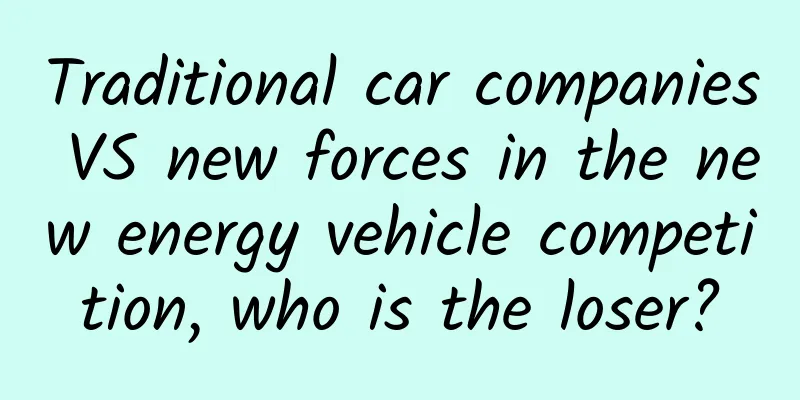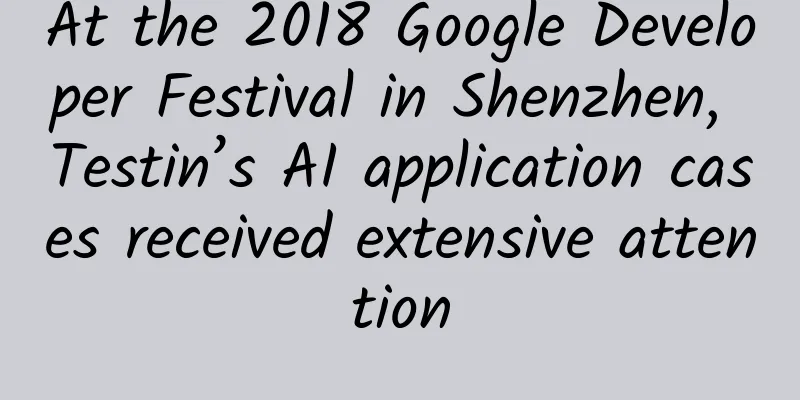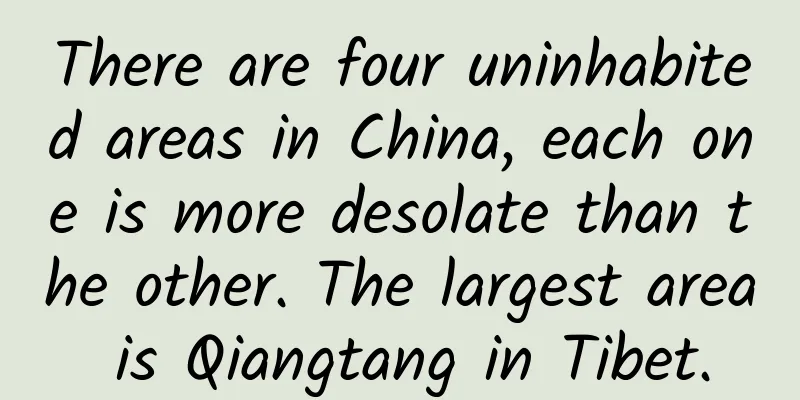Traditional car companies VS new forces in the new energy vehicle competition, who is the loser?

|
Driven by the current energy crisis, environmental crisis, favorable policies and market demand, more and more companies from all walks of life are flocking to the trend of new energy vehicle manufacturing. On the one hand, it is profitable, and on the other hand, it is also driven by a sense of social responsibility. The more people gather together, the bigger the waves will be. How to divide the cake of the new energy vehicle industry? Perhaps we should face the competition with a more collaborative and open mind. Those who have invested in the new energy vehicle industry are mainly divided into traditional car companies and new entrants. Representatives of traditional car companies include BYD, Chery, Geely, etc. They have professional production equipment, production lines, accumulated technology, and management and operation advantages; new entrants such as the well-known LeTV, Gree, and ZTE, etc., have more active Internet thinking and are better in the software field. In the field of new energy vehicles, traditional car companies and new entrants are often PK, and "who will laugh last" is also a concern of all walks of life. However, facing the same environment and mission, both traditional car companies and new entrants need to calm down and consider future development. Has the electric vehicle industry entered a period of rapid growth? Starting from December 16, parts of northern China have experienced the worst smog this year. Automobile exhaust emissions are one of the main culprits causing the lingering smog. Based on the trends in recent years, the development of new energy vehicles seems to be on the fast track. However, Lin Mi, executive vice general manager of Yuntu New Energy, said at the meeting: "Everyone is very anxious about the development of electric vehicles. The automotive industry may be different from many Internet industries and many fast-growing industries because electric vehicles need time to accumulate." Generally speaking, the forward research and development process of electric vehicles on a new platform takes three to four years, or 36 to 48 months. It has only been 36 months since the country actually implemented the pilot promotion of new energy vehicles in 2013, which means that the first wave of forward research and development of electric vehicles put on the market has not yet officially borne fruit. Therefore, Lin Mi showed a little worry: "Compared with the very long and very cumbersome engineering industry of automobiles, our demands are too urgent." Lin Mi, Executive Vice President of Yundu New Energy Hong Bin, deputy director of Dongfeng Nissan's Venucia business unit, expressed the same view: "We believe that the conditions for the rapid growth of the new energy vehicle industry have not yet been met. We can see that the development of any industry will go through a gestation period, a rapid development period, and then a mature stage." Hong Bin, Deputy Director of Dongfeng Nissan Venucia Business Unit At present, the development of new energy vehicles in my country is still in the stage of being driven by national policies. Only when market-driven instead of policy-driven becomes the dominant force can the new energy vehicle industry develop sustainably. When new energy vehicles enter the market, consumers will eventually pay for them, so the following issues need to be addressed from the perspective of consumers: Searching for piles in thousands of places The range and charging issues of new energy vehicles are the reasons why many people are taking a wait-and-see attitude. At this stage, the supporting infrastructure construction of new energy vehicles in my country is not particularly sound. Taking the charging mode as the mainstream power supply, China’s current car-pile ratio is not coordinated, the charging interface voltage platform is not unified, and there is a lack of supporting support policies. In addition, all parties are actively grabbing land, and charging piles cannot be interconnected. Therefore, many consumers still have doubts about the promotion of new energy vehicles. In addition to charging stations, the power batteries, drive motors, and electronic control systems in the new energy vehicle industry chain all need to be coordinated and followed up. Reducing the cost of power batteries is particularly important. Consumers are most concerned about the cost and range of electric vehicles. If the cost of batteries can be reduced while the range can be increased, the spring of electric vehicle development will be just around the corner. From the perspective of the complete industrial chain, Wang Guangyu, general manager of the spare parts marketing company of JAC Passenger Vehicle Marketing Company, believes that "JAC Motors pays special attention to the research and development and breakthroughs of the three major electric vehicles. At the same time, it also has some thoughts on new energy. The first is the market problem of used new energy vehicles. After all, new energy vehicles are still a new thing, and we should explore this topic; the second is the problem of battery recycling. With the end of the product market life cycle, the problem of battery recycling must be solved. We need to think and practice together." Wang Guangyu, General Manager of Spare Parts Marketing Company of JAC Passenger Vehicle Marketing Company Market + Policy China's subsidies for new energy vehicles are the largest in the world, resulting in the current development of new energy vehicles being driven by the government rather than the market. In the early stages of new energy vehicle promotion, national policy subsidies are necessary, but with the development of new energy vehicles, the market + policy dual-driven mechanism should be promoted. Hong Bin, deputy director of Dongfeng Nissan's Venucia business unit, believes that if the new energy vehicle industry is to enter a period of rapid growth, it should rely more on products and markets, and private customers should account for 70% to 80%. Competition? Win-win? In the era of sharing economy, win-win cooperation is the best choice and result. Lin Mi said in the discussion: "We hope to respect tradition, make innovations based on making good cars, and create a brand that consumers will accept in the future." Lu Qun, chairman of Qiantu Motors, believes that the real advantages now are still giants such as Toyota, BMW, and Tesla. As new forces, they should have some new ideas. "We are also willing to do it ourselves, and we are also willing to spread these new ideas to new entrants and traditional people." Xia Heng, co-founder and president of XPeng Motors, believes that the value of traditional cars is reflected in the body, chassis and traditional parts, but now the value of cars has changed and shifted, and is increasingly reflected in software, functions, algorithms, services, data and other fields, which are precisely what non-traditional car companies, known as "barbarians", are good at. Whether it is traditional car companies or new car-making forces, they should learn from each other, connect with each other, and reflect these new values in future products. Xia Heng, co-founder and president of XPeng Motors When talking about new energy vehicles, the Internet must be mentioned. In the Internet era, cars have become information islands. Therefore, how to apply Internet thinking to new energy vehicles and how to ensure information security are issues that car manufacturers must face. For Internet car manufacturers, this is a very good opportunity. For traditional car manufacturers, they can also work hard on products and after-sales services. Intelligence is also one of the trends often mentioned in new energy vehicles. The integration of large amounts of storage capacity, sensor capabilities and vehicles will bring about huge changes in vehicle performance and functions. Technology companies and Internet companies have a lot of resources and accumulation, but technology needs to be integrated with vehicles. How to integrate and how to practice are issues that new car-making forces and traditional car companies need to solve together. Dai Lei, COO of Future Mobility, believes that "we should have a very open mindset and an Internet mindset for new energy vehicles, and we must reconsider what consumers want. But at the same time, we must have some experience and strength in traditional industries, and this must be perfectly integrated to succeed." Dai Lei, COO of Future Mobility Consumers have the final say Jin Weimin, Vice President of Zhidou and General Manager of Sales Company: "When making new energy vehicles, we are pursuing low carbon, environmental protection and energy conservation. But whether consumers agree or not, what kind of new energy vehicles do consumers pursue, and what is the market demand. This is worth our deep consideration." Jin Weimin, Vice President of Zhidou and General Manager of Sales Company Regarding the positioning of new energy vehicle consumers, many car companies have a consensus with Yundu. "I think it's not just Yundu, the image of the entire electric vehicle consumer is: they are very career-oriented, mature in mentality, are in the rising stage of their careers, relatively speaking, like new things, like to try new things, like challenges, and want to have fun in life. We believe that these people are the majority among those born in the 1990s and 1980s," said Lin Mi. Whether in terms of products or services, consumers undoubtedly determine the development prospects of new energy vehicles. Combining JAC's market experience in new energy vehicles, Wang Guangyu puts accurate customer positioning at the top of automobile marketing: "JAC advocates family-like service, everything for customers, family-like care, and family-like service. Over the past decade, we have been persistent in deepening this service brand. We have established a proactive, professional, honest, and satisfactory service commitment and established a support system for such a brand." In terms of marketing model, time-sharing leasing was unanimously recognized by the guests present. They believed that under the country's advocacy of the sharing economy, time-sharing leasing is a relatively large market. Summary: Although major developed countries and related automobile companies in the world have made great progress in the field of new energy vehicles, in general, China is still basically on the same starting line as other countries, with a gap of only 3-5 years, unlike the huge gap of 20 years in traditional internal combustion engine technology. This is even more true in terms of commercialization and industrialization. We still have certain advantages in some aspects. Whether driven by economic interests or social responsibility, cooperation and interconnection are the trends for every company in the field of new energy vehicles to develop, just as Fu Qiang of Ai Chi Yiwei said in his final summary: "For the development of new energy vehicles, we must work together, collaborate, and face the next hundred years with an open mind." As a winner of Toutiao's Qingyun Plan and Baijiahao's Bai+ Plan, the 2019 Baidu Digital Author of the Year, the Baijiahao's Most Popular Author in the Technology Field, the 2019 Sogou Technology and Culture Author, and the 2021 Baijiahao Quarterly Influential Creator, he has won many awards, including the 2013 Sohu Best Industry Media Person, the 2015 China New Media Entrepreneurship Competition Beijing Third Place, the 2015 Guangmang Experience Award, the 2015 China New Media Entrepreneurship Competition Finals Third Place, and the 2018 Baidu Dynamic Annual Powerful Celebrity. |
<<: Reuters: China to set communication standards for driverless cars
Recommend
Is eating late night snacks addictive? How to eat to satisfy your cravings and stay healthy
Beer, kebabs, crayfish... Does it sound like you’...
Is it okay to travel during the Dragon Boat Festival? The latest summary of epidemic prevention policies in various places
As the holidays approach, many people are prepari...
Foshan Hotel Mini Program Development and Production, How to Develop Hotel Reservation WeChat Mini Program?
With the continuous development of the Internet of...
Peng Bin's quadriceps and hamstring theory and practice fitness course
Peng Bin's quadriceps and hamstring theory an...
Understand the new marketing benchmark in 1 minute and create high added value with low cost
Low-cost cases can bring huge returns because of ...
Insect antennae are so weird
Source: www.countytimes.co.uk Huer Insects are ve...
App Growth | NetEase Cloud Music’s Growth Path!
This article summarizes several growth methods of...
iOS vs Android Development — How Do We Choose?
【51CTO.com Quick Translation】I believe many of yo...
Useful information: In-depth analysis of 5 key indicators to build your own AARRR operating model
Every time I talk with my peers about operations ...
New research: Once this core organ ages, the functions of the whole body will "regress"
The liver is an important detoxification organ in...
Teacher Yu Ying's postpartum repair and shaping of the pelvic girdle repair & the required course for the transformation of hot moms 108 minutes
Teacher Yu Ying's postpartum repair and shapi...
Why do roosters crow in the morning?
"The lights are on at midnight and the cocks...
South Korea's National Statistical Office: South Korea's semiconductor shipments fell 22.7% in July 2022 from the same period last year
South Korean chipmakers' factory shipments fe...
Guan Lixin's "Extraordinary Profits" creates a profit triangle system
Guan Lixin's "Extraordinary Profits"...
Comparison of the Fluency of iOS7.1 on Various iPhone Generations
After the release of iOS7, many old iPhone users s...









